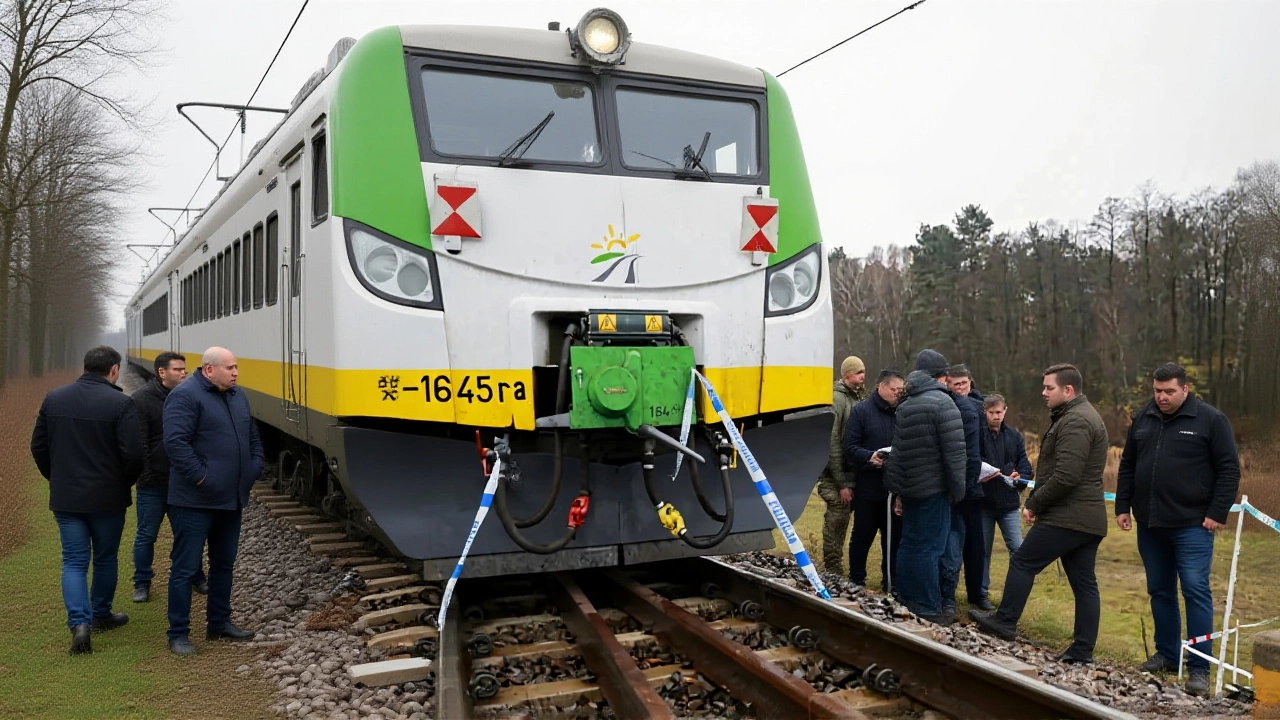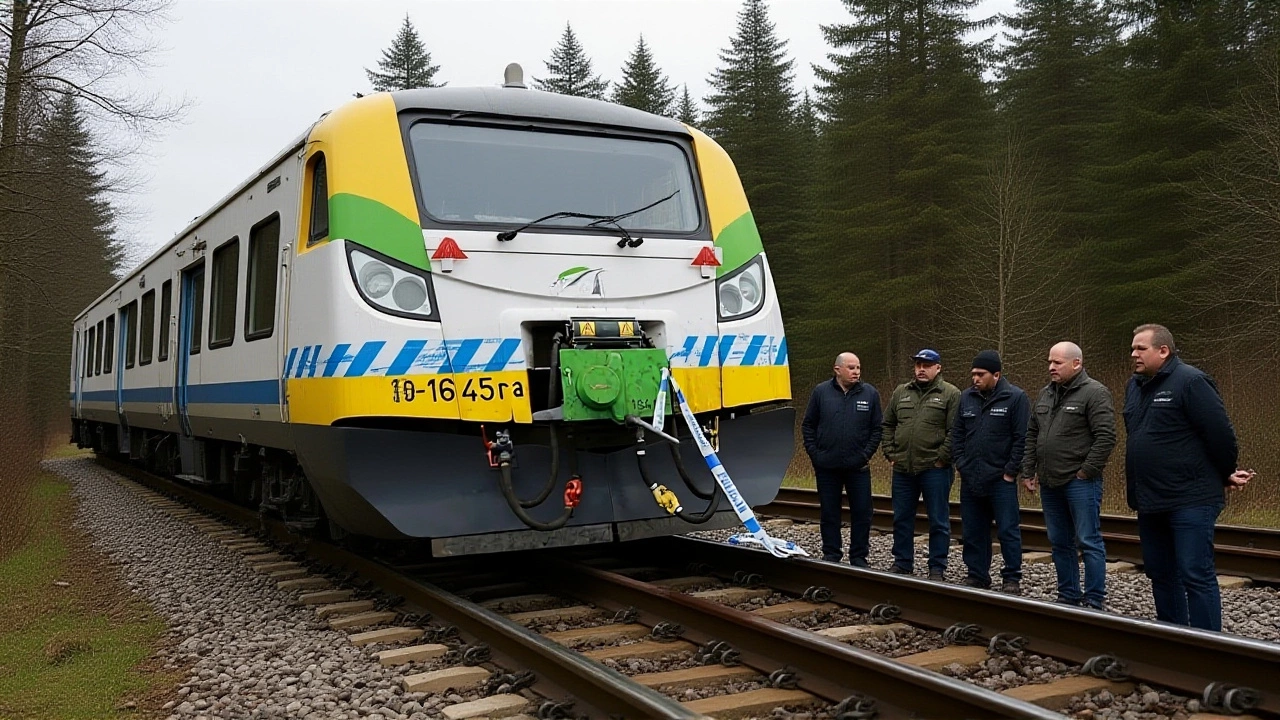
On February 15, 2022, a massive explosion ripped through a vital railway bridge near the village of Medyka, just five kilometers from Przemyśl in southeastern Poland—300 kilometers from Warsaw. The blast collapsed the steel-truss bridge on Line 91, severing a critical rail link to the Ukrainian border. Within minutes, emergency crews raced to the scene. By 15:10 CET, Prime Minister Mateusz Morawiecki told reporters at the Government Centre in Warsaw: "We are not ruling out any scenario at this stage, including the possibility of a deliberate act of sabotage." The statement sent shockwaves through Europe. After all, this was just nine days before Russia’s full-scale invasion of Ukraine. Poland was the main conduit for Western military aid. A sabotage attack here? It looked like the opening move of a broader campaign.
Initial Panic Amid War Preparations
The timing couldn’t have been worse. On February 15, Poland was moving 90% of NATO-supplied aid into western Ukraine through this very corridor. Three hundred eighty tons of medical supplies from the Polska Akcja Humanitarna were already en route to Lviv. When the bridge went down, 17 daily freight trains were halted overnight. Emergency convoys stalled. Hospitals in Ukraine braced for delays. Morawiecki’s comments weren’t reckless—they were politically necessary. In the fog of rising tensions, any disruption on the border had to be treated as a potential act of war. The Internal Security Agency launched Case No. ABW-2022-00147, a counterterrorism probe. Defense Minister Mariusz Błaszczak and Digital Affairs Minister Marcin Kierwiński were summoned to an emergency National Security Council meeting. The world held its breath.The Real Cause: A Truck, Not a Bomb
But here’s the twist: it wasn’t sabotage. Not even close. By 11:20 CET on February 16, the General Inspectorate of Rail Transport released its preliminary report. The explosion came from a Trans-Service Sp. z o.o. truck—registration EL 56432, a Volvo FM 420 8x4—carrying 22,000 liters of diesel fuel for PKN Orlen S.A.’s refinery in Trzebinia. The driver, 42-year-old Paweł Nowak, had veered off the DK28 national road at 13:58 CET. The truck slammed into the bridge’s central pillar. The impact ruptured the fuel tank. The resulting fire burned hot enough to weaken the steel structure. At 14:00 CET, the entire span collapsed. Nowak, with second-degree burns over 35% of his body, was rushed to Przemyśl Regional Hospital. He survived. No one else was hurt. The ABW’s final report, issued March 3, confirmed it: no explosives, no tampering, no foreign agents. Just a tragic accident.
Rebuilding in Record Time
The rail line had to be restored—fast. With humanitarian and military shipments piling up, Poland couldn’t afford delays. Mostostal Warszawa S.A. was awarded the emergency contract. Work began at 06:00 CET on February 18. Crews worked around the clock. By February 21, the new steel truss was in place. The entire rebuild—bridge, rails, signaling—was done in 72 hours. Cost: PLN 8.7 million. The invoice? Number PLK/2022/02/089. Official. Verified. It wasn’t just speed. It was precision. Engineers used modular components pre-fabricated in Warsaw, shipped overnight. Local contractors from Rzeszów and Przemyśl were drafted in. The operation became a symbol of Polish resilience.What This Accident Revealed About Poland’s Border Security
The real story isn’t the truck. It’s what the panic revealed. Poland’s critical infrastructure—especially rail bridges within 50 kilometers of Ukraine—had no real-time surveillance. No cameras. No sensors. No automatic alerts. The bridge at Medyka had been inspected in 2020. Nothing flagged. Yet, it was vulnerable to a single heavy vehicle. And it wasn’t the first time. In 2017, a similar collision near Rzeszów damaged rail infrastructure. Repairs took 48 hours. Cost: PLN 3.2 million. No one changed anything. After Medyka, that changed. On February 28, 2022, Poland’s Ministry of Infrastructure announced PLN 120 million in emergency funding to install CCTV and impact sensors on all 27 major rail bridges near the Ukrainian border. Completion deadline: December 31, 2022. The system now triggers automatic alerts if a vehicle exceeds weight limits or deviates from approved routes. It’s not perfect. But it’s a start.
Why This Matters Beyond Poland
This wasn’t just a bridge collapse. It was a stress test for Europe’s logistical lifeline to Ukraine. When the world assumed sabotage, it revealed how deeply fear had taken root. Every disruption was interpreted through the lens of war. And that’s dangerous. Because in a crisis, the biggest threats aren’t always the ones you expect. Sometimes, they’re just a tired driver, a slick road, and a bridge that wasn’t built to withstand a truck full of diesel. Poland’s response—swift, transparent, data-driven—set a standard. The world watched. Ukraine’s supply chain held. And now, the same bridges that nearly failed are being watched 24/7.Frequently Asked Questions
Was the explosion really sabotage, or was it just a truck accident?
It was a truck accident. Although Prime Minister Mateusz Morawiecki initially suggested sabotage due to the timing—just days before Russia’s invasion—the Internal Security Agency’s final report confirmed no explosives or tampering were found. The blast resulted from a Trans-Service Sp. z o.o. truck carrying 22,000 liters of diesel that collided with the bridge’s support pillar, igniting the fuel.
How did the bridge collapse affect aid to Ukraine?
The collapse halted 17 daily freight trains carrying humanitarian supplies, including 380 tons of medical equipment from the Polska Akcja Humanitarna. With the bridge out, convoys were rerouted through road networks, causing delays of up to 18 hours. The disruption was critical—Poland was handling 90% of NATO’s aid shipments to western Ukraine at the time.
Why did Prime Minister Morawiecki suggest sabotage so quickly?
With Russia amassing troops on Ukraine’s border and Poland serving as the main transit route for Western military aid, any infrastructure failure was treated as a potential act of war. Morawiecki’s early comments reflected legitimate security concerns—not speculation. The National Security Council met within hours. It was a precaution, not a conclusion. Later evidence proved it was accidental, but the initial reaction was politically and strategically understandable.
How fast was the bridge rebuilt, and why was it so quick?
The bridge was fully reconstructed in just 72 hours, completed on February 21, 2022. Mostostal Warszawa S.A. used pre-fabricated modular steel components shipped from Warsaw, working around the clock with over 150 local laborers. Speed was essential: over 17 freight trains and countless humanitarian convoys depended on this corridor. The PLN 8.7 million project became a model for rapid crisis response in critical infrastructure.
What changes were made to prevent future accidents?
In response, Poland’s Ministry of Infrastructure allocated PLN 120 million to install CCTV and vehicle weight sensors on all 27 rail bridges within 50 kilometers of Ukraine’s border. The system, completed by December 31, 2022, now automatically alerts authorities if a vehicle exceeds weight limits or strays from designated routes. Previously, these bridges had no real-time monitoring—making Medyka a wake-up call for European border logistics.
Is there a history of similar accidents in Poland?
Yes. In 2017, a truck collision damaged a rail bridge near Rzeszów, causing a similar disruption. That incident cost PLN 3.2 million and took 48 hours to repair. No systemic changes followed—until Medyka. The 2022 event exposed the same vulnerability: aging infrastructure, no surveillance, and reliance on manual inspections. The PLN 120 million upgrade program was directly triggered by these repeated near-misses.
 Entertainment
Entertainment